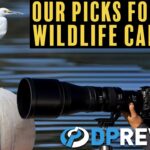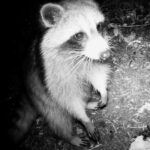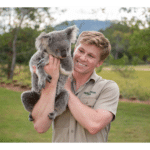Key Takeaways
- The Nikon D850’s high ISO range and low-light capabilities make it ideal for night wildlife photography.
- Understanding the basics of night photography is crucial for capturing sharp, well-exposed images of nocturnal animals.
- Optimal exposure settings for night photography typically include a wide aperture, slow shutter speed, and high ISO.
- Location scouting and understanding animal behavior enhance the chances of a successful nocturnal wildlife shoot.
- Post-processing is a vital step in night photography to adjust exposure, reduce noise, and bring out details.

Setting the Scene for Nocturnal Splendor
When the sun dips below the horizon and the world quiets down, a different kind of beauty emerges. This is the realm of nocturnal wildlife, where every rustle and shadow can unveil a moment worth capturing. The Nikon D850, with its impressive low-light capabilities, is your gateway to this enigmatic world. So, let’s embark on a journey to capture the essence of the night with this remarkable camera.
Nikon D850: A Wildlife Photographer’s Night Companion
Why choose the Nikon D850 for your nighttime expeditions? Simply put, it’s a powerhouse in the dark. With a sensor that nearly touches 46 megapixels and an ISO range that stretches from 64 to 25,600 (expandable to 102,400), this camera is built to handle the nuances of low light. Moreover, the back-illuminated sensor ensures that every pixel counts, capturing more light and detail.
But it’s not just about the sensor. The D850 boasts an advanced autofocus system that remains precise in dim conditions. This is crucial when you’re trying to lock focus on an animal that’s barely visible to the naked eye. And let’s not forget the rugged build and weatherproofing—because when you’re out in the wild at night, you need a camera as resilient as your spirit of adventure.
The Allure of the Dark: Why Night Photography Fascinates Us
There’s a certain magic to night photography that’s hard to replicate during the day. The darkness adds a layer of mystery and depth to your images. At night, you’re not just taking a photo; you’re telling a story. The contrasts are stronger, the colors more subdued, and the atmosphere thick with potential. Capturing nocturnal wildlife is about revealing the unseen and sharing a glimpse of a world that many never witness.
Moreover, night photography pushes you to be creative. You play with light and shadows, experiment with exposure, and often, you need to be patient to get that perfect shot. It’s photography in its purest form—just you, the camera, and the endless possibilities of the night.
Crafting the Perfect Night Wildlife Shot
Now, let’s dive into the practical side of things. To capture the perfect night wildlife shot, you’ll need to understand and control three main components of exposure: aperture, shutter speed, and ISO. Here’s the breakdown:
- Aperture: A wide aperture (a low f-stop number) lets more light into the lens, which is essential in low light situations. Think of it as widening your eyes in the dark to see better.
- Shutter Speed: A slower shutter speed allows more light to hit the sensor. However, too slow and you risk blurring the movement of active animals. It’s a balancing act.
- ISO: A higher ISO makes the camera more sensitive to light. The D850 excels here, allowing you to push the ISO higher without compromising much on image quality.
Remember, these settings work together. Change one, and you’ll likely need to adjust the others to compensate. The key is to find the right combination for the scene in front of you.
Essential Gear for Nighttime Prowess
Aside from your Nikon D850, there are a few pieces of gear that can elevate your night photography game:
- A sturdy tripod to stabilize your camera for those long exposures.
- A remote shutter release to minimize camera shake when pressing the shutter button.
- Extra batteries because long exposures and cold nights can drain power faster.
- A flashlight or headlamp to navigate in the dark and occasionally ‘paint’ light onto your subjects.
These items don’t just make life easier; they open up new possibilities for your photography. For example, with a tripod, you can experiment with star trails or light painting, adding a unique touch to your wildlife shots.
Now, let’s get ready to head out into the field. We’ll scout the perfect location, set up our gear, and wait for the nocturnal ballet to begin. Stay tuned for the next installment where we’ll dive deeper into mastering the Nikon D850 settings for low light and share techniques to capture the wonders of the night.
- Scouting the right location is essential for capturing nocturnal wildlife; it involves understanding animal habits and habitats.
- Using long exposures and light trails can add a creative twist to night wildlife photography.
- Post-processing is crucial for enhancing night shots, especially when dealing with exposure and noise.
- Motion blur can be a challenge, but certain techniques can help in capturing crisp images of moving subjects.
- Being adaptable and patient is key when dealing with unpredictable wildlife behavior during night shoots.
After you’ve gathered your gear and set out into the velvet night, the first step is to find the stage where your nocturnal subjects perform. This is where location scouting becomes an adventure in itself.
Location scouting is about more than just finding a beautiful spot; it’s about understanding the behavior of the wildlife you’re aiming to photograph. You need to think like the animals you’re tracking. Where do they hunt or forage? Where do they feel safe? Answering these questions will lead you to the places where wildlife is most active, and thus, where you’re most likely to capture that perfect shot.
It also pays to visit these locations during the day. You’ll want to look for signs of animal activity, such as tracks or droppings. Pay attention to the landscape too. Look for natural clearings, water sources, or perches—places where animals are likely to be visible. And remember, safety first: know the terrain and any potential hazards, and always let someone know where you’re going.

“Facts about Nocturnal Animals with …” from m.youtube.com and used with no modifications.
Location Scouting: Finding the Night’s Characters
Once you’ve pinpointed a promising spot, it’s time to set up. If you’re after a specific species, study its habits and times of peak activity. For instance, owls are often most active right after dusk and before dawn. Positioning yourself downwind from where you expect the animals to be can also prevent your scent from giving away your presence.
Be patient. You might spend many nights waiting for the perfect encounter. But when it happens, when an elusive fox steps into the clearing or an owl swoops in front of your Nikon D850, the heart-pounding excitement and the resulting images are worth every second of the wait.
Unlocking Creativity with Long Exposures and Light Trails
Long exposure photography opens up a realm of possibilities when shooting nocturnal wildlife. By slowing down the shutter speed, you can capture the movements of the stars, create light trails, or even use a technique called ‘light painting’ to artfully illuminate your subject. Learn more about the capabilities of the Nikon D850 for wildlife photography.
Here’s a tip: start with a shutter speed of about 15 seconds and adjust from there. If you’re including the night sky, you’ll be amazed at how the stars streak across the sky with longer exposures. Just make sure your camera is on a tripod to prevent camera shake.
Post-Processing: Bringing Nocturnal Images to Life
Once you’ve captured the night, it’s time to bring those images to life. Post-processing is where you can push the boundaries of what was visible to your eyes and reveal the full potential of your photos.
With the Nikon D850, you’ll have a wealth of detail at your fingertips, thanks to its high resolution. But sometimes, the low light can lead to less-than-perfect exposure. This is where tools like Lightroom or Photoshop come into play.
For example, if your shot is underexposed, you can adjust the exposure slider to brighten the image. Be careful not to go too far, as this can introduce noise.
Contrast is another tool that can add drama to your night shots. Increasing contrast can help to make your subject stand out against the background, but again, moderation is key. Too much contrast can lead to loss of detail in the shadows and highlights. For more insights on capturing the night, consider reading this Nikon D850 review.
Tweaking Exposure and Contrast for Dramatic Effects
When you’re adjusting exposure and contrast, keep an eye on the histogram. This graph represents the tonal range of your image. Ideally, you want a nice spread across the graph, without clipping the shadows or highlights. This ensures you retain detail throughout the image.
And remember, the D850’s RAW files are rich in information, giving you a lot of latitude for adjustments. So shoot in RAW, and you’ll have the best chance of perfecting your night images in post.
Noise Reduction: Keeping the Night’s Quiet Intact
Noise is the grainy speckles that can appear in your photos, especially when shooting at high ISOs. The D850 handles noise well, but in post-processing, you can take further steps to clean up your images.
Most photo editing software has built-in noise reduction tools. Use them sparingly, as overdoing it can result in a loss of detail and make your photos look plastic. A little noise can actually add to the mood of a night shot, so don’t feel like you have to eliminate it completely.
Overcoming Challenges in Nocturnal Wildlife Photography
Nocturnal wildlife photography comes with its own set of challenges, from the technical aspects of your camera to the unpredictable nature of your subjects.
Dealing with Movement: Tips for Capturing Crisp Images
Even at night, animals don’t stay still. To capture sharp images, you’ll need to balance the ISO, aperture, and shutter speed. Sometimes, you might need to increase the ISO to get a faster shutter speed, which can help freeze the action.
Another technique is to use your camera’s continuous shooting mode. The D850 can shoot up to 7 frames per second, which increases your chances of capturing a clear shot of a moving subject.
And don’t forget about autofocus. The D850’s autofocus system performs well in low light, but you can also pre-focus on a spot where you expect the animal to appear, which can be particularly effective for stationary subjects or predictable paths of movement.
- Use a high ISO to allow for a faster shutter speed, but watch out for noise.
- Shoot in continuous mode to capture multiple frames and increase your chances of a sharp image.
- Pre-focus on a spot where you anticipate the animal will be for quick shots.
Adapting to the Unexpected in Wildlife Behavior
Wildlife is wild, after all, and animals won’t always do what you expect. This unpredictability is part of the thrill of wildlife photography. Stay flexible, be patient, and be ready to adapt to whatever the night brings.
Remember, the best wildlife shots often come from understanding and anticipating animal behavior. Spend time learning about the animals you’re photographing, and you’ll be better equipped to capture those once-in-a-lifetime shots.
In the next and final installment, we’ll answer some frequently asked questions about night wildlife photography with the Nikon D850 and wrap up our nocturnal adventure.
Frequently Asked Questions (FAQ)
What is the ideal ISO setting for night wildlife photography with the Nikon D850?
When shooting with the Nikon D850 at night, the ideal ISO setting can vary based on the ambient light and the behavior of your subject. However, a good starting point is between ISO 3200 and 6400. These settings should provide a balance between sensitivity to light and manageable noise levels. Since the D850 performs exceptionally well in high ISO settings, you can comfortably push the ISO higher if needed, but always check your images for noise.
- Start with ISO 3200-6400 for a balance of light sensitivity and noise.
- Adjust ISO based on the scene’s lighting and desired exposure.
- Monitor noise levels in your images when increasing ISO.
How can I minimize noise in my night photography shots?
To minimize noise in your night photography shots with the Nikon D850, start by shooting in RAW format to ensure you have the most data to work with during post-processing. Utilize the camera’s built-in noise reduction feature for long exposures. In post-processing, use noise reduction tools judiciously, aiming to reduce grain without sacrificing detail. Also, consider exposing to the right (ETTR), which means slightly overexposing your image to capture more data in the shadows, then bringing down the exposure in post-processing, which can reduce the appearance of noise.
What are the best Nikon lenses for D850 night wildlife photography?
For night wildlife photography with the Nikon D850, lenses with wide apertures are ideal. Prime lenses like the Nikon AF-S NIKKOR 24mm f/1.4G ED or the Nikon AF-S NIKKOR 50mm f/1.8G allow for maximum light to hit the sensor. For more versatility, consider zoom lenses with a constant aperture like the Nikon AF-S NIKKOR 70-200mm f/2.8G ED VR II. The choice of lens also depends on the distance from your subject and the composition you’re aiming for.
Example: A wildlife photographer captures a stunning image of a nocturnal predator using the Nikon AF-S NIKKOR 70-200mm f/2.8 lens, utilizing its wide aperture to focus quickly and gather ample light, resulting in a sharp and well-exposed photograph.
How does the D850 perform in terms of battery life during long night photography sessions?
The Nikon D850 is known for its efficient power management and can typically last through a long night of shooting. However, battery life can be affected by cold temperatures and the use of live view or extended exposures. To ensure uninterrupted shooting, carry spare batteries and keep them warm, for instance, by storing them close to your body when not in use.
Can the Nikon D850 capture the Milky Way and other celestial subjects?
Yes, the Nikon D850 is well-suited for astrophotography, including capturing the Milky Way and other celestial subjects. Its high resolution, wide ISO range, and excellent dynamic range allow photographers to capture detailed images of the night sky. Pair the D850 with a wide-angle, fast-aperture lens for best results, and use manual focus set to infinity to ensure sharp stars.




